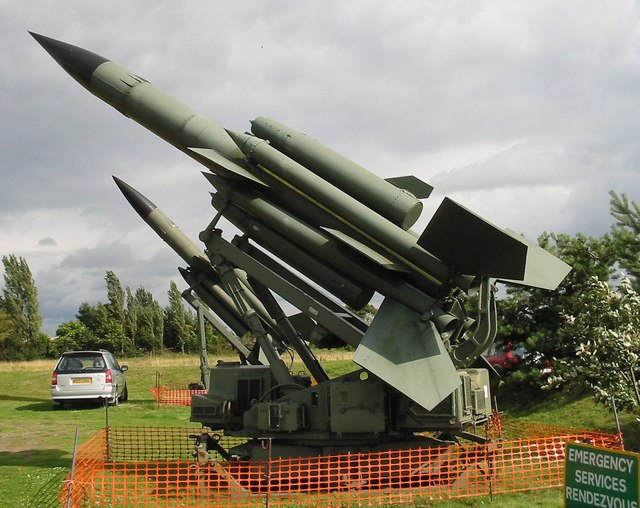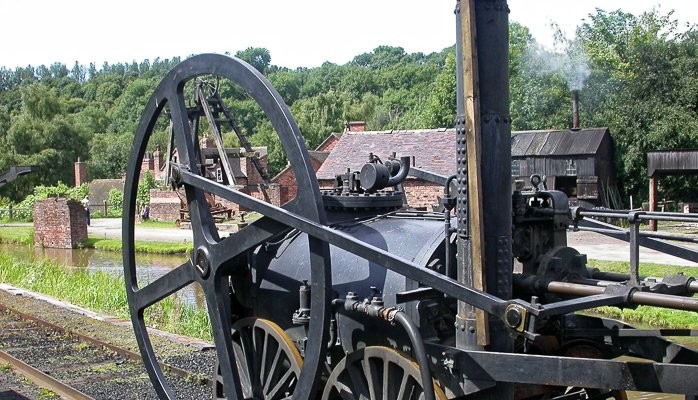BIM, Clients leading the revolution
[Posted in LinkedIn on December 19, 2014]
Continuing with the fictional company of LTS Jones Ltd. An informed client organisation with an ongoing portfolio of mixed new build, both buildings and infrastructure. It has established a board level led internal change programme with the help of an experienced BIM consultant. The BIM consultant has suggested a succession plan that includes the Commercial Department leading the holistic BIM implementation within the company, still actively supported by the board.
Why the commercial department, I almost hear in concert. The obvious choice would be the architectural or engineering teams, or perhaps the Engineering Data Manager or CAD Manager. The Document Control Manager could also be considered. Lots of organisations choose one of these. However, I consider that this limits the deployment of the full potential of the holistic BIM revolution. Procurement, contract, cost, value, organisation, management of the supply chain are already part of the domain of the Commercial Department. The Commercial Department should be able to adopt a holistic approach more readily; especially as generally it already has a wide influence both within and outwith the organisation, probable more than any other single part of the organisation. That said, all of the others need to be involved, and could equally led the BIM implementation, albeit at a slightly reduced pace.
The internal BIM implementation is progressing well and is coming towards the end of the 'inform' stage of the change management programme. A keen, personable, respected, knowledgeable, entrepreneurial, innovative person or persons are working closely with the BIM consultant so as to be able to take over the internal BIM implementation drive.
This however is still not much of a revolution. It is a huge step forward for LTS Jones Ltd which will place it in good stead going forward into 2016. Even bigger, brave steps are required both of LTS Jones Ltd and other similar companies if the revolution is to spread thorough out the construction industry. There needs to be a significant change in the procurement process and the relationship with the supply chain. Some of the changes need to be recognized and supported by changes to the EU Procurement rules. This is where the not to be forgotten visionaries, who started the journey and shaped the future, who are already talking about BIM maturity levels 3 and 4, and are talking about BIM, 3D OS maps, 3D geology maps, GIS, Big Data, Data Scientists, Town Planning, and Smart Cities, all in the same sentences, well paragraphs, will again help fuel the revolution. Fan the flames and continue to enable the progress towards a more joined up digital world.
As and aside that brings me to a few more change of name suggestions. Digital Information Management (DIM), Digital Information Management and Modelling (DIMM), Digital Information Visualisation (DIV), or Global Digital Information Management and Integration (GDIMI). OK, I know that BIM is here to stay, in the same way that vacuum cleaners are Hovers, at least in the UK.
Back to industrial scale revolution. Let’s look at some small changes that will make a difference. The project workflow has a feasibility stage, called different names under different Workflows or Plan of Work. Assuming than each project has been subject to some form of cursory review before having a budget allocated for a feasibility study it would seem reasonable to also assume that a significant proportion of those projects progress further into the Workflow. The first change then becomes quite simple; spend more on the initial phases of the project. This will aid better decisions. Engage with the supply change, proactively. Allow sufficient time for the investigations to take place. Provide sufficient budget for your own staff to properly engage with the project, not just a skeleton crew to project manage the outsourced feasibility study. Bring in the operator and maintainer into the initial requirements development, and keep them involved. All of these are simple things to change and will be in the gift of LTS Jones Ltd to change. However, there is undeniably a cost involved in this approach. Or is it merely a transfer of when the cost is incurred? Actually, it is more than likely the prime contributor to a reduction in both project costs and whole life costs, and BIM has not even had a look in yet. The same applies to surveys. Engage with the survey companies. Ask what can they do, and in what timescales before telling them what they have to do in the minimum possible time for next to no cost. This is a truly false economy and waste of money in all cases other than those jobs that don’t make it past feasibility study. If there is a high proportion of fall out, perhaps review your process. For the LiDAR Survey, have the definition setting on high. Don’t try to cut the budget by increasing the intervals of the boreholes in the ground investigation. For the utility survey information, have everything done in one sweep. CAT scan, multi-frequency ground penetrating radar. The whole works. The greatest risk and expense is the unknown. So why would you want to shackle your project right from the beginning. Look at any project risk register, it is full of unknowns that could, and should have been reduced in the earlier stages of the project, and that are now considered to be a critical delay, so cannot be undertaken it the available time frame. ‘Just add some more money to the risk pot.’ This does not constitute good risk management, good financial management. It is neither good project management nor good safety management. So why is it so widespread a practice? There are so many horror stories out there of unknown geology and services that have killed projects, and sometimes unfortunately, people. Even the utility services survey, if done as a full ground survey could revel unknown archaeology. Which is cheaper, a planned six month archaeology dig, or a complete site shutdown after works have commenced? I know I could have drifted into later parts of some workflows but the point is still valid.
Create better information to make better decisions, sooner.
Now, you have collected some information in conjunction with your specialists. By definition, they know more about their subject than you do, it is there specialism. By engaging with them you can tap into than knowledge rather than just having the minimal tick box report. Provided that anything they find is not terminal for the project, pay a little more (again!) to have the information translated and integrated. This is the beginning of your BIM model. The ground upon which you will be building! Have the ground information modelled, probably into a program like Civil3D. Find out if there is a 3D geological model of the area. Add it to the LiDAR and other survey information to provide you base model. I know by this time you will have spent what appears to be a lot of money for this stage of the project. I am now going to suggest something radical which will stop a fair proportion of you reading any further. Publish the federated model of survey and investigation data as open source type information, free to use. You needed to spend the money on the surveys anyway, why not put the information out for others to benefit. Again the central visionaries will have a role to play in creating a common repository. Over a long period of time there would be an emerging image of the national map of services, ground data, geology and built environment, as it was at that point in time. Rich digital information, partially about our past. Perhaps similar to the national censes of the past is to the Genealogists of today.
This is where it starts to get a little trickier! Where LTS Jones Ltd will have to start standing out from the crowd, to start becoming a leader in their time. As if giving survey information away for free was not enough! It is time for a full review of the procurement strategy for the supply chain. It is no longer appropriate for lowest cost to be the sole deciding factor in the award of a contract. The relationship with the supply chain has to change. It is therefore a self-evident imperative that how we procure and contract with the supply must also change. There already exists procurement rules which allow for the selection of the contactor based on not cost alone. ‘The most economically advantageous tender (MEAT) criterion enables the contracting authority to take account of criteria that reflect qualitative, technical and sustainable aspects of the tender submission as well as price when reaching an award decision.’
The EU may wish to consider changing that to most socially and economically advantageous tender. I don’t think it is necessary to change the EU procurement rules to accommodate behaviours as part of the evaluation criteria. The relationship between the parties is directly, although not wholly, related to the behaviours of the parties. Good relationships between the parties invariably led to better project outcomes. Even when projects go sour, good relationships limit the impact of the difficulties. Therefore it follows the behaviours impact the final cost of the project and therefore the economics of the project. By making the behaviours of the potential project team part of the tender assessment right from the earliest part of the procurement process, LTS Jones Ltd are making a significant change to supply chain management and contributing to the BIM revolution. Further, by making the behavioural assessment 20-25% of the marks, they are making a firm statement about their intentions for the project and the relationships that they wish to engender and maintain. It is a clear statement of intent. Add to that a change to the CIC Protocol example to include a termination clause for not playing BIM and collaboration nicely, especially if it is in both directions, and they have very clearly stated their intent.
This will enable the Tenderers to believe that intent and reduce their Tender Price accordingly. They can do this not by a further attack on their profitability but in the firm knowledge that in projects where the parties work together, the costs are lower than they would otherwise be. The more confidence the Tenderer has in his Client the more he is able to give his best price and the more likely he is to win work. Simple easy steps to the first part of the value proposition of BIM and the associated collaborative working.
Before LTS Jones Ltd get to the point of Tendering for the construction phase of the project there are the design stages to consider. This is perhaps more difficult and may need some changes to EU Procurement rules. The design process would logically seem to be more efficient if undertaken by one supplier from cradle to grave. Knowledge transfer between stages would be simplified and continuity would be improved, both providing efficiencies and cost savings. BIM, it could be argued would aid both and therefore it is no longer such a restriction. However, with the improved relationships throughout his supply chain engendered by LTS Jones Ltd it does seem practical to retain a winning team of surveyors, designers, operators, maintainers and client together on the project, through all of its stages. Do you therefore award all stages with break clauses for each stage, or award a small early stage contract with big variations for each stage. Another input required from the visionaries.
Why did we start breaking it up in the first place? Was it just to get the cheapest price at each stage? Or perhaps to allow the flexibility of if and when to continue with the project. Sometimes it seems to be to get a different perspective on the project. I have known a case where a change in designer at stage gate resulted in a £70m saving on project construction cost by adopting a totally different solution, whilst providing enhanced functionality and aesthetics.
However, this is where I become slightly contradictory and inconsistent. On the one hand I talk about clients trusting the specialists they employ and remaining software agnostic in their EIR and specifications. Now I am going to say that some of the design houses will have to change their business model to continue to serve their clients well. Those that do will reap the rewards. I fail to see for instance how a designer can write an option report, stating a preferred option, without having an estimate, a programme of works, safety and constructability assessment, a whole life cost, and operational and maintainability elements. The BIM workflow, at 5D / 6D plus carbon will require all of these to be done collaboratively, concurrently not in separate companies sequentially, with all of the inefficiencies that involves. Continuous, progressive assurance together with the full adoption of requirements management and systems engineering are also required to ensure consistently high quality approach and outcomes
Different approaches to procurement and relationships, different business models in some cases, and different workflows are all essential parts of the BIM revolution and are precursors to the software and technical solutions of BIM implementation. For LTS Jones Ltd to adopt this together with his internal changes, in a structured and informed implementation he has demonstrated industry leadership and contributed to the longer term BIM revolution at the same time as ensuring his continued viability and improving his safety, efficiency, and profitability.
Wishing you all a Happy Christmas and New Year, or holiday and festive season.

















